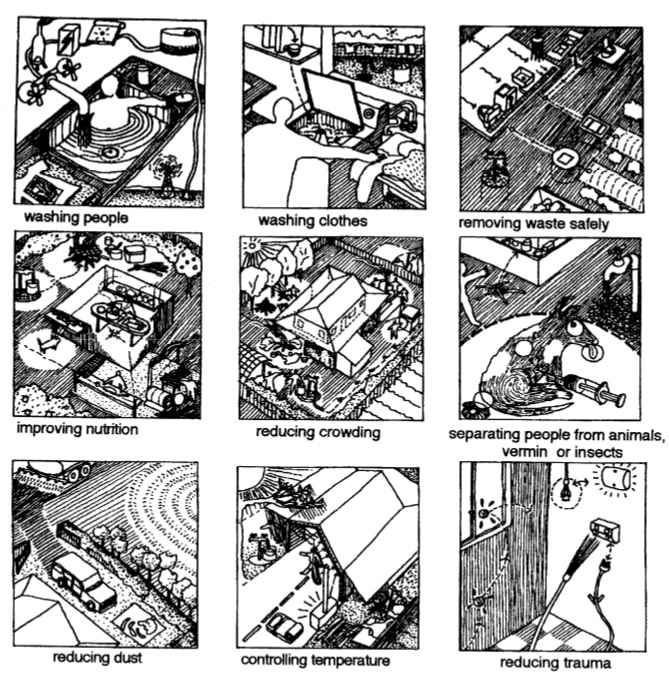The Housing for Health program focuses on ensuring housing is safe and residents can undertake nine evidence-based healthy living practices.

©Healthabitat
-
Washing people
Ensuring there is adequate hot and cold water, taps and drainage. -
Washing clothes and bedding
Ensuring the laundry tub is functional with provision for a washing machine. -
Removing wastewater safely
Ensuring toilets and all drains are working. -
Improving nutrition through the ability to store, prepare and cook food
Ensuring the sink, taps and stove work. -
Reducing the negative impacts of overcrowding
Ensuring health hardware (e.g. hot water and septic systems) can cope with the number of people living in the house. -
Reducing the negative effects of animals, vermin or insects
Ensuring adequate insect screening. -
Reducing the health impacts of dust
Introducing ways to limit the movement of dust to reduce the risk of respiratory illness.
-
Controlling the temperature of the living environment
Looking at the use of insulation and passive design to reduce health risks, particularly to small children, the sick and elderly. -
Reducing hazards that cause trauma
Considering aspects of housing that can cause non-life-threatening injury.
Prioritising healthy living
These nine healthy living practices are ranked from one (most important) to nine.
Life threatening electrical, gas, fire and structural safety issues are treated as the highest priority, followed by the first four healthy living practices. These are considered
critical for people to be able to practice healthy living.
The last five healthy living practices are important for healthy living, but are often beyond the scope of project budgets in the Housing for Health program.
All fixing works are prioritised based on safety and health benefits. To learn more about how the Housing for Health program priorises work within projects, visit
Housing for Health priorities.
For more information about healthy living practices, visit
Healthabitat.